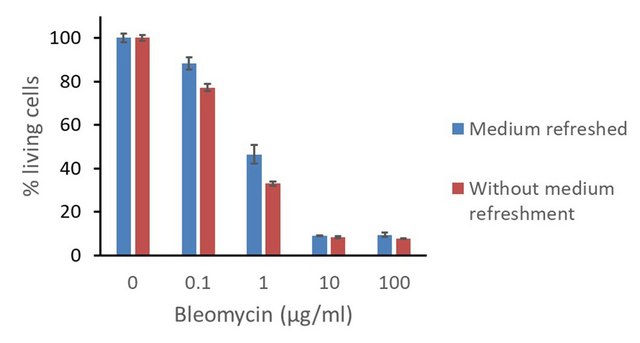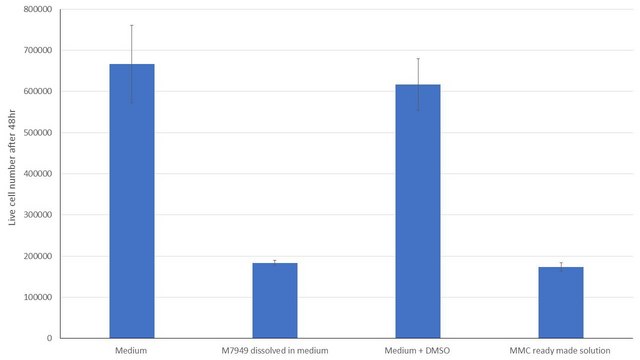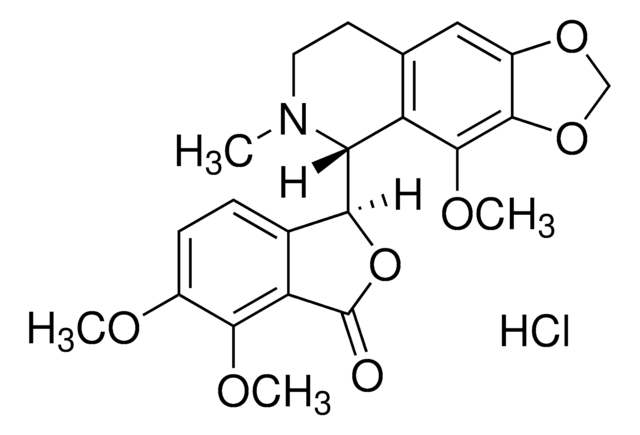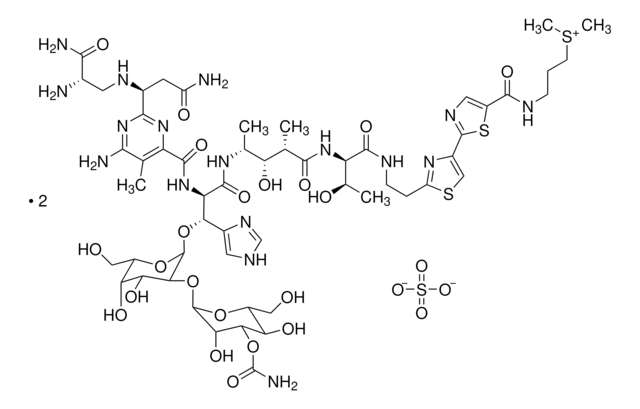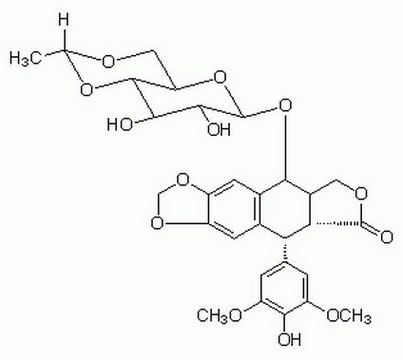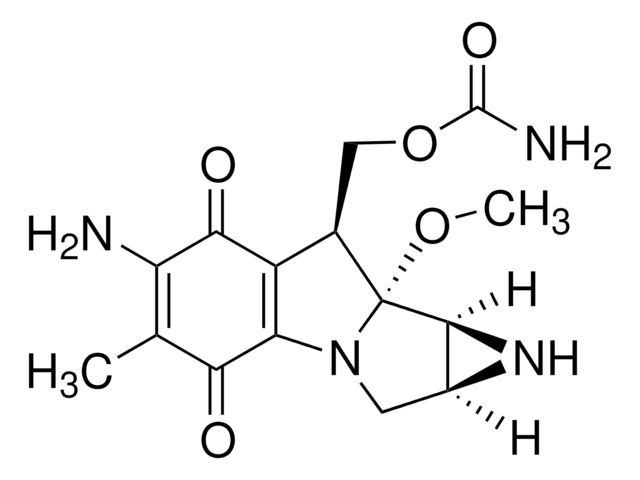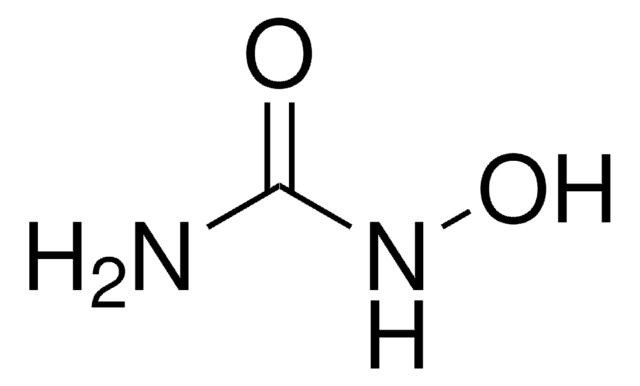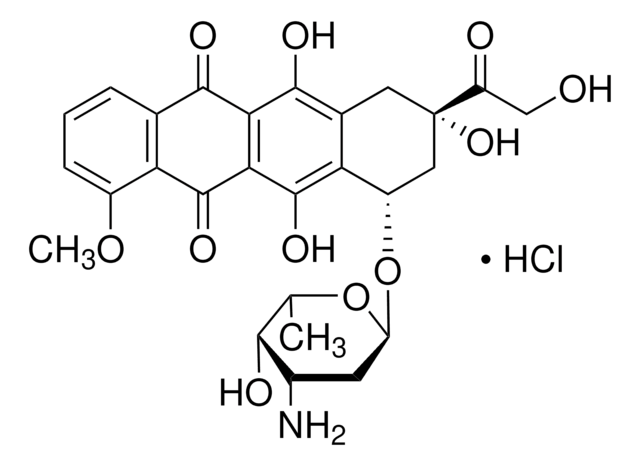N9162
Neocarzinostatin
from Streptomyces carzinostaticus, ≥90% (SDS-PAGE), solution
Synonym(s):
Holoneocarzinostatin, NCS, NSC-69856, Zinostatin
About This Item
Recommended Products
Product Name
Neocarzinostatin from Streptomyces carzinostaticus, ≥90% (SDS-PAGE), ~0.5 mg/mL
Quality Level
Assay
≥90% (SDS-PAGE)
form
solution
concentration
~0.5 mg/mL
antibiotic activity spectrum
neoplastics
Mode of action
DNA synthesis | interferes
shipped in
wet ice
storage temp.
2-8°C
SMILES string
N([C@H]1[C@H](O[C@@H]([C@@H]([C@@H]1O)O)C)O[C@H]2[C@@H](C=C5C2CC#C[C@H]6O[C@]6(C#C5)[C@@H]7OC(=O)OC7)OC(=O)c3c4c(c(cc(c4)OC)C)ccc3O)C
InChI
1S/C35H35NO12/c1-16-12-19(42-4)14-22-20(16)8-9-23(37)27(22)32(40)45-24-13-18-10-11-35(26-15-43-34(41)46-26)25(48-35)7-5-6-21(18)31(24)47-33-28(36-3)30(39)29(38)17(2)44-33/h8-9,12-14,17,21,24-26,28-31,33,36-39H,6,15H2,1-4H3/t17-,21?,24-,25-,26-,28-,29+,30-,31-,33-,35+/m1/s1
InChI key
BLXZMHNVKCEIJX-PNKAXBHOSA-N
Application
- as a DNA damaging agent to treat human fibroblast GM0637 cells
- as a radiomimetic antibiotic to induce DNA damage
- in combination with Vγ2Vδ2 T cells to determine the cytotoxicity in ovarian cancer cells
Biochem/physiol Actions
Physical form
Storage Class Code
10 - Combustible liquids
Flash Point(F)
Not applicable
Flash Point(C)
Not applicable
Personal Protective Equipment
Regulatory Information
Choose from one of the most recent versions:
Certificates of Analysis (COA)
Don't see the Right Version?
If you require a particular version, you can look up a specific certificate by the Lot or Batch number.
Already Own This Product?
Find documentation for the products that you have recently purchased in the Document Library.
Articles
Bioactive small molecules for immune system signaling target identification/validation and antibiotics, antivirals, and antifungals offered.
Our team of scientists has experience in all areas of research including Life Science, Material Science, Chemical Synthesis, Chromatography, Analytical and many others.
Contact Technical Service